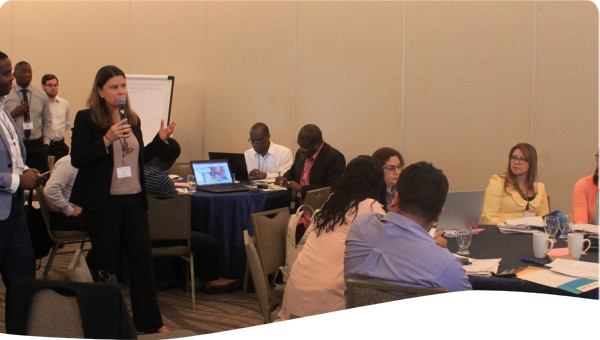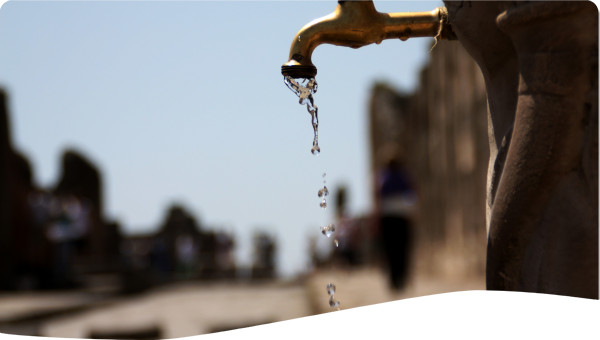Armenia has a progressive policy for development of water supply and sanitation (WSS) services to the country’s 3.1 mln population. Market-oriented reforms have been implemented for the last 20 years applying different forms of PPPs, such as management and lease contracts. Armenia is one of the few countries where all WSS companies are managed under public-private partnerships (PPP) contracts by international operators. In spite of existing challenges, Armenian water sector has shown increasing level of performance under PPP contracts. First stage of reforms included legal and institutional changes, setting investment priorities, amending tariff policy and water metering.
For many years after the collapse of the Soviet economy, most of the WSS companies in Armenia were in serious state of disrepair. Armenia was originally faced with increasing demand, deteriorating assets and dilapidated infrastructure, which resulted in a steadily decreasing and costly provision of service. The difference between real needs and design capacity adding on to the lack of repairs, renewal and maintenance during many years resulted in water leakage in the public networks and in households.
The water sector of Armenia faced serious problems following the collapse of the Soviet Union:
- Insufficient funding, poor management led to the deterioration of network and increased losses;
- WS duration was insufficient and the quality of water supply was bad;
- The financial situation of the water utilities was precarious.
Facing this crisis, the government made a radical decision. Government signed a management contract with a private operator for the Yerevan Water company (2000–06). It was followed by a lease contract in Yerevan (2006–16), a management contract in secondary towns and cities under the Armenia Water and Sewerage Company (2004–16), and a joint management contract of three regional utilities (2009–16). In all, this “first generation” of PPPs lasted 16 years.
First stage of reforms
- Legal Reforms
- Institutional Reforms
- Investment Priorities
- Tariff Policy
- Water Metering
Second stage of reforms
At the end of the first-generation PPPs, the government decided to continue its partnership with the private sector. It is recognised that reduction of water losses, expansion of wastewater treatment (WWT), financial self-sufficiency of water utilities, and service provision to 579 off-grid areas.
- In 2017 the government decided to sign a lease contract with one operator for 15 years. It places greater emphasis on non revenue water (NRW) reduction, developing WWT infrastructure, and ensuring full operations and maintenance cost recovery from tariffs.
- Initiating necessary arrangements and actions related with main strategic directions and policy issues
- Applying for a lease contract of 15 years
- Transferring the duties of 5 utilities to a single operator
- Applying unified tariff for 15 years (2017-2031)
Main objectives of the reforms have been defined, which were:
- Improving WSS sector governance and regulation, creation of a clear and applicable legal framework compatible to the new situation, ensuring stability of implementation laws and contracts;
- Clarification and separation of governmental bodies' functions,
- Ensuring proper financial flows in the sector, i.e. the appropriate level of tariffs and payment discipline;
- Identification of centralized and decentralized forms of management in the sector;
- Reforming the management structure and strengthening the sustainability of WSS companies
The reforms were directed to the legal and institutional spheres, investment and tariff policies as well as to water metering and accounting systems.
Legal Reforms
Over the last twenty years, Armenia has implemented serious legislative and institutional changes in the water sector. The reforms were directed to the legal and institutional spheres, investment and tariff policies as well as to water metering and accounting systems.
According to the Water Code, the water systems in Armenia cannot be privatized; they can only be transferred to private management under different forms of PPP. It can be noted that the overall legal and regulatory environment is mainly favourable for deepening PPP in the water sector. PPP Contracts have not raised any serious regulatory problems.
Institutional Reform
Reforms were carried out as well as with the aim of separating the regulatory aspects. This led to creation of a new independent institution: the Public Services Regulatory Committee.
Investment priorities
As there were no financial resources to improve the situation, it was decided to solve the problem through involvement of foreign credits and grants under the Government guarantees. Lots of loan projects implemented with the support of IFIs (ADB, EBRD, WB, KFW, NIF, EIB).
Tariff Policy
Before 2003 different governmental bodies defined tariffs in Armenia. At present, tariff policy is implemented by the Public Services Regulatory Commission.
Currently the majority of the population of Armenia is served by lease contracts under PPP arrangement. From 2017 second stage of reforms started in Armenia under lease/concession advance level of PPP scheme. The PPP contract for 15 years 2017-2031 and tariffs are approved for 15 years, with the possibility of some adjustments each year, according to the lease contract.
Water Metering
Many serious steps were undertaken to improve water supply calculation. A metering strategy was designed and implemented.
Currently about 650 thousand consumers (which make more than 90% of all consumers) have installed individual water meters.
The water meters installing brought to a considerable reduction of water consumption, whereas, the water consumption norm was set in the past at 400 liters per capita per day, after the installation of water meters the water consumption has become some 120 l/day per capita and even less in rural areas. Installation of water meters helped to improve calculation for actual water losses too.
In terms of modernization and development of WSS infrastructure and limited financial means, PPP is one of the most effective mechanisms to solve various complicated problems emerged in the water sector. With regard to directly supporting PPP development, The Government of Armenia defined series of priorities for creation and maintenance of favourable conditions for private sector participation.
The 3 types of PPP are used in Armenia: management contract, lease contract and lease with concession fragments. In general, the PPPs in the WSS sector of Armenia were implemented stage by stage, with more simple models at the beginning (e.g. management contract) and relatively complicated models (leasing, concessions) afterwards. All companies in Armenia without any exception proceed along this path.
All progress of many global examples of successful PPP initiatives in the WSS sector, the example of the Armenia WSS sector is notably relevant, being a very similar system that was initially developed during the Soviet era. Over the past two decades, the WSS utilities serving the cities, towns and outlying settlements of Armenia have undergone substantial transition: from inefficient, poorly operating, often virtually bankrupt utilities to modern, efficient, customer-focused WSS companies that provide international-standard services and contribute to the national economy.
As a result of the reforms, all the water supply companies although having been on the verge of bankruptcy now lead the list of the highest tax-payers or social security contributors of the country.
In order to continue and develop the reforms in Armenia, the second stage of reforms has commenced in the country.
Further performance improvements were achieved through the first seven years of the subsequent lease contract, including the improvement of water supply continuity to over 22 hours/day, water quality to 100%, energy consumption reduced by a further 70%, collection efficiency to 99%, metering to over 97%, and staff ratio reduced by over 40%. Over this period, and due to the level of improvements, average tariffs increased to US$ 0.44/m3, resulting in the utility not requiring any further governmental subsidies. A more advanced PPP model (lease contract with concession fragments) was subsequently assigned in 2016, incorporating a long-term tariff plan (2017-31). As a result of the success of the PPP initiatives, the Government of Armenia is now comfortable with operational and maintenance processes, thereby focusing its priorities towards improved WSS sector regulation, and monitoring and controlling the quality of WSS services.
As shown, substantial improvements were achieved during the period of the five-year management contract (2000-2005). Water supply continuity improved substantially (increasing from 6 hours/day to over 18 hours/day average), energy consumption nearly halved (from 240 million kWh to 124 million kWh), collection efficiency improved four-fold (21% to 86%), and meters were installed at an unprecedented level (less than 1% to 87%). Cumulatively, due to the improvements achieved, the utility was able to increase the average tariff level from US$ 0.10/m3 to US$ 0.27/m3, resulting in substantial annual government subsidy reductions: US$ 4.1 million in 2000 to less than US$ 1 million in 2005.
All progress indicators have been approved by international and independent technical and financial auditors.
It is crucial for a dedicated government agency to serve as the main part on behalf of public for the private operator.
The government should be in charge of capital investment and monitoring of PPP contract. Private sector is responsible for management during the management and lease contract, and the Lease + Concession model also responsible to do mandatory capital works.
Cost recovery tariff should be ensured to complement cost reduction and efficiency.
It is vital to secure continuous support from donors for capital expenditure and technical assistance.
 Case studies
Case studies



